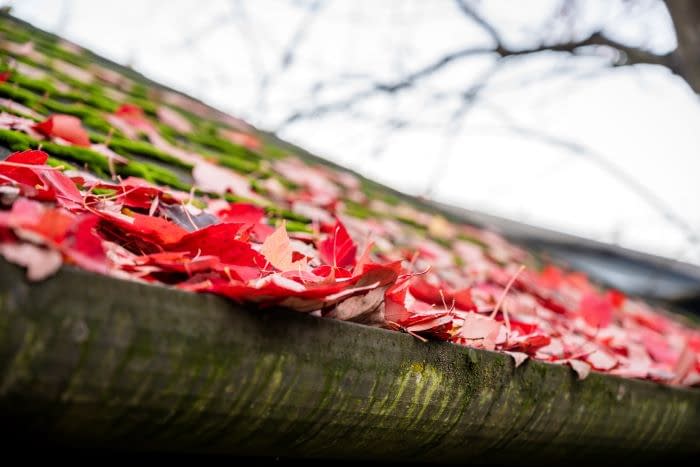
2019 How Falling Leaves Affect Commercial Roof Systems
It is officially fall, which means cooler weather and falling leaves. And while the season is a gorgeous time of year, the falling leaves that come with it might not be as welcome when they land on your commercial roof system. Here’s all you need to know about falling leaves.
Leaves falling from the trees and landing on the roof won’t cause damage if they are dry. When wet, however, you might be facing an issue. When the leaves that accumulate on a commercial roof system become wet, they can begin to clump together, soaking in even more water. Because they sit stagnant, they begin to rot. Once rotting occurs, the moisture can get into the shingles. The shingles then begin to rot as well. As more water collects, the rotting can cause leaking into your business property.
This cycle continues until properly inspected, cleaned, and repaired or replaced. In addition to rotting, the weight of leaves as they accumulate and soak in so much water can cause an uneven distribution of pressure to the beams, which can affect the structural stability of the building.
To ensure that your commercial property is safe, secure, and strong through falls weather, take preventative steps to keep the leaves from rotting and weakening the roof system.
First, keep trees branches from overhanging onto the roof. Have the trees trimmed regularly so that when the leaves begin to fall, they don’t land on the roof. This not only keeps them off the roof, but it allows the sunlight to reach the few strays that end up on the roof, keeping them dry.
Second, clean the gutters. Leaves and other debris will inevitably wind up in the gutters. But routine maintenance ensures that the gutters are clean and water can easily flow through them. Keep the gutters firmly attached to the building so that when winds pick up, they are secure.
Finally, inspect the property regularly. From the landscaping to the roof, walk around your business and make sure that the tree limbs are cut back, shingles are in place, and there’s no accumulation of leaves and other debris. If tackling these projects on your own, be safe, use a ladder that extends at least two feet above the roof line, use binoculars to inspect the roof for leaves, and, when necessary, call on professionals to properly repair any damage.